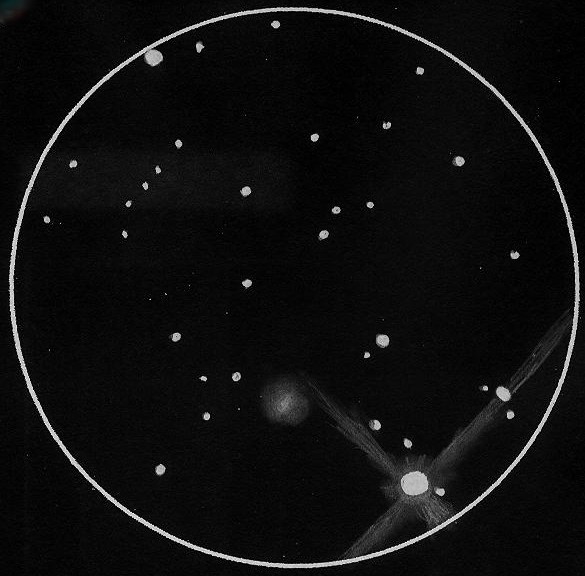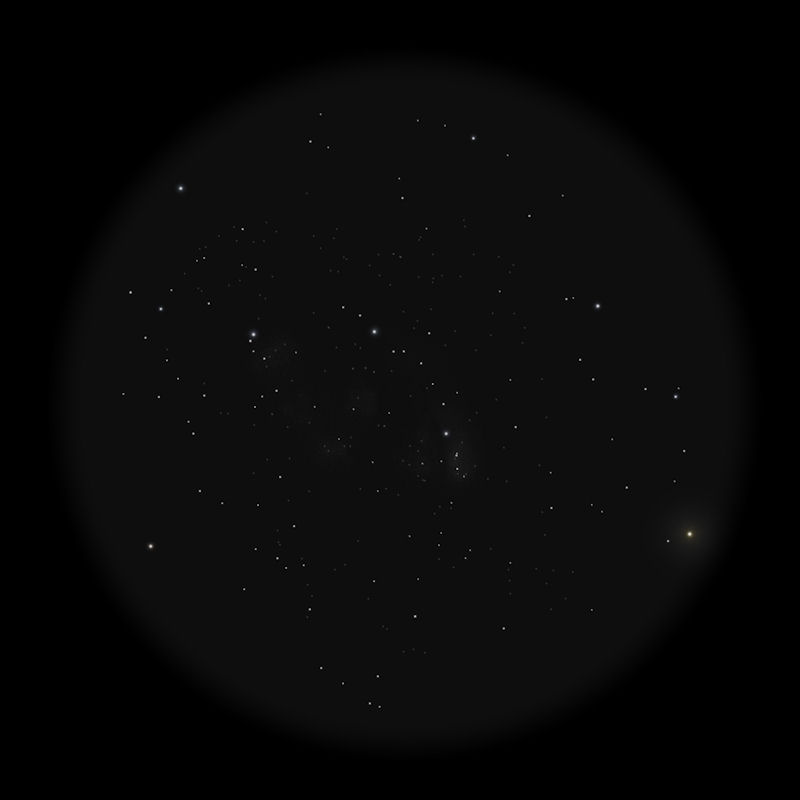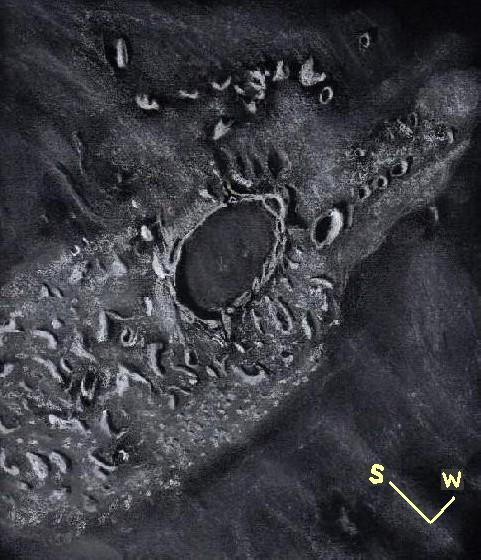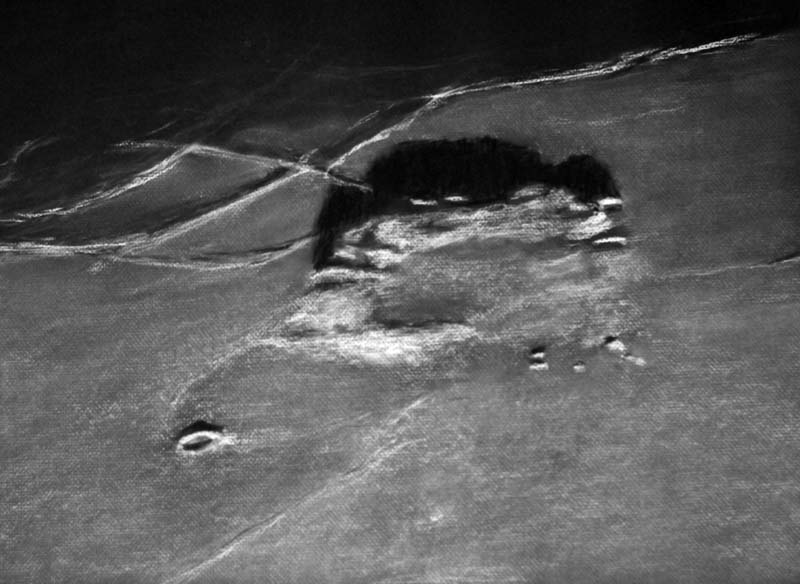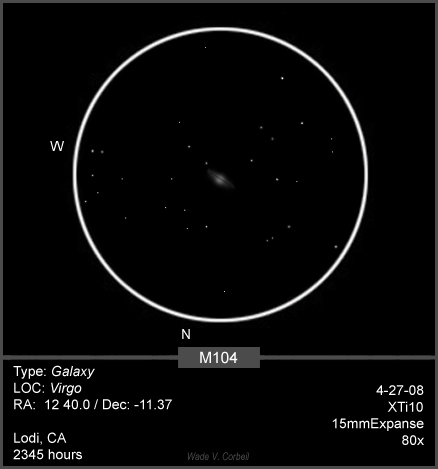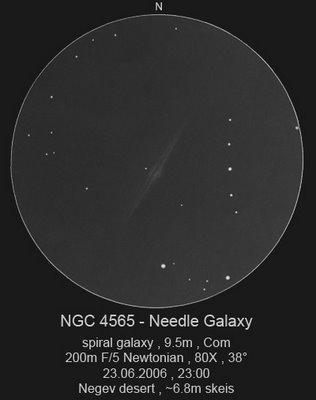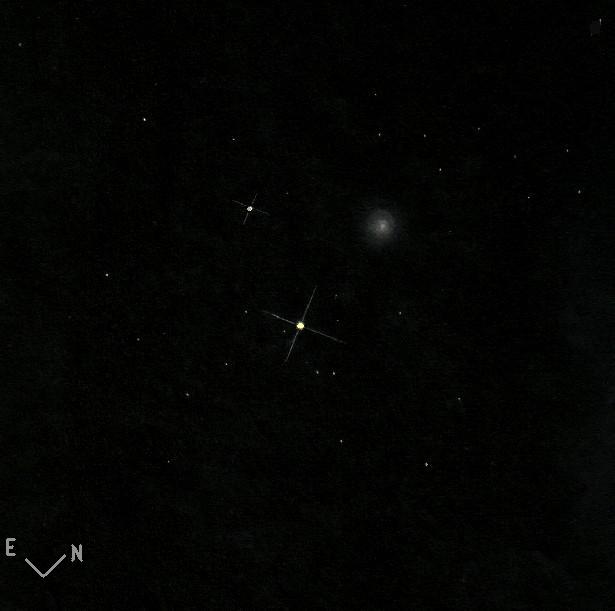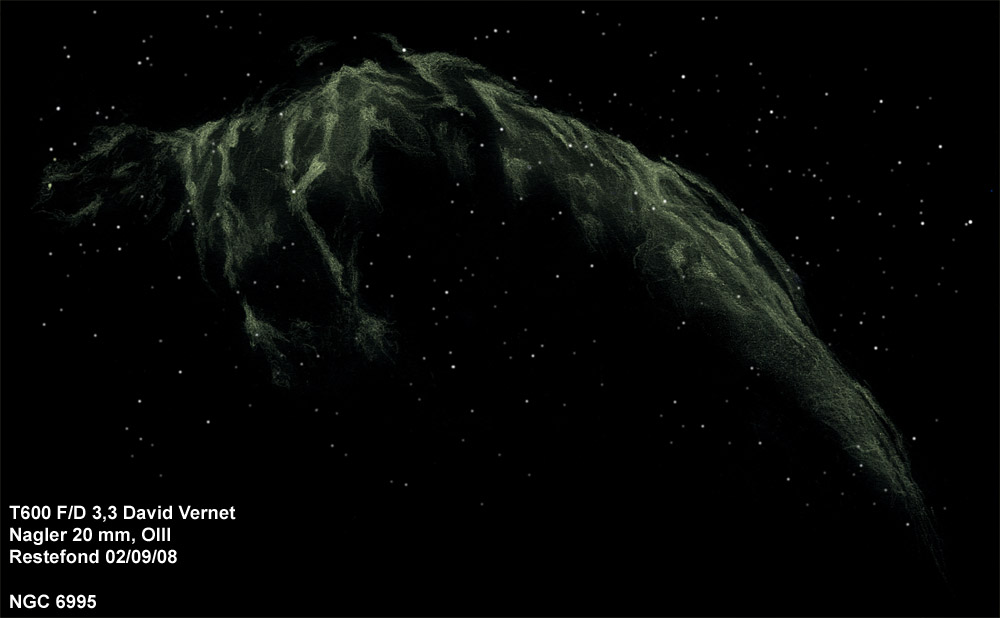NGC 404 – Mirach’s Ghost
Sketch and Details by Dale Holt
Following Frank’s post of Mirach’s Ghost NGC 404 on Tues 16th I promised in my comments to follow in his footsteps when the sky cleared and sketch this interesting duo.
Last night with my 14″ and Watec 120N Video camera I did just that. With the gibbous Moon rising in the east, Jupiter low in the SW and the summer triangle high over head it was at last! a fine evening, but I needed to move fast before the ‘Ghost’ vanished in the light of the silvery moon.
It was fun to follow what Frank had accomplished so recently.
Telescope 350mm F5 Newtonian reflector on a driven mount
Watec 120N Deep Sky B&W video camera fitted with an 0.6x Atik focal reducer.
The sketch made in real time from b&w security monitor on white cartridge paper using black ink for stars, HB pencil and blending stump for NGC 404 and diffraction spikes.
The sketch was scanned and converted into a negative image in photoshop
Dale Holt, Chippingdale observatory, Chipping, Hertfordshire, England

